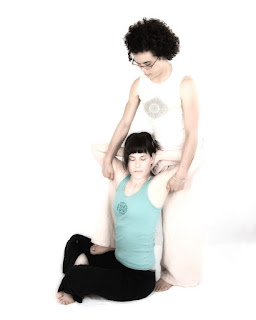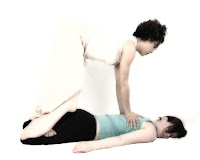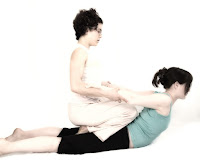
- What is Thai Massage?
This modality is sometimes referred to as lazy yoga because the remains passive, as a practitioner administers yoga poses or asanas.
A session will also include Jap Sen or pressure applied along the Thai energetic pathways called Sen Lines. These pathways run throughout the entire body circulating energy or Lom. Specific Sen lines are stimulated to encourage the free flow of energy based on individual temperament, physical make up or imbalance.
During each session the practitioner sets a specific intention to cultivate metta or love and kindness to generate a positive energetic exchange between the practitioner and recipient.
Thai Massage is only a sector of the all-encompassing medical system of the traditional Thai culture. Rather than a form bodywork, within the traditions of Thailand. Thai Massage is more than bodywork, it is a “therapy of energy”. A balanced lifestyle within the Thai tradition includes a connection to mind, body and spirit. The key is to live mindfully, establish a positive intent to motivate each action. Maintenance for the physical body is serviced through herbs, diet, meditation and Thai Massage.

In general, the Thais have remained committed to preserve the healing practices developed by Jivaka Kumar Bhacca, also referred to as the Father Doctor or Shivago. Shivago is referenced in the Pali Cannon as a physician to the Buddha dating back to the 2nd century BC. Preservation efforts where initially made through the creation of What Pho in the 1700s. What Pho hosts several stone tablets and statues demonstrating Thai Massage, herbal medicine and sen energy lines. In honor of the Thai culture the sessions shared with you are designed to meet your needs and maintain the utmost respect for the Thai culture and lineage of their practices.

- Why is Thai Massage important?
Healthy touch is imperative to develop and maintain social, emotional and cognitive well-being. The physical activities we perform to service our emotional needs become ingrained in our muscle and chemical memory. These routine behaviors manifest themselves as chronic muscle tension, aches and pains, which can amplify to illness. Progressive muscle relaxation induced through Thai Yoga serves as maintenance for the physical, emotional and spiritual bodies to revamp these patterns.
- How do I prepare for a session?

During a traditional Thai Massage session you remain fully clothed, there are no oils used and the practitioner performs the session on a mat, rather than a table. It is best to wear loose, comfortable clothing similar to clothing similar to that worn at the gym or to a yoga class. Please communicate openly with your practitioner to ensure both safety and quality of your session. It is imporant that you keep your practitioner informed of any injuries, surgeries, or health concerns. Also, share the type of touch you prefer and sensitivities to insure you receive a session that feels right for you.
For out call services please prepare at least a 10 x 10 to 12 foot space for your practitioner’s mat. Aside from clearing floor space this may include a quick sweep or vacuum. If you have requested a hot herbal compress your practitioner will also need close access to an electrical outlet. Room temperature and lighting should be adjusted to your liking. Please silence or turn off your phone(s).
As for your personal preparations, it is ideal that you eat lightly or do not eat one to two hours before your appointment to ensure your comfort. Please limit or avoid your intake of toxins such as alcohol, nicotine and caffeine on the day of your appointment. This is to encourage your body to return to its natural rhythms.
After your session please remember to drink plenty of water. You may also consider scheduling time for yourself following your session. Creating this time will allow you to reap the full benefits of your body’s natural balance.
Photos by Linda Lee Studios